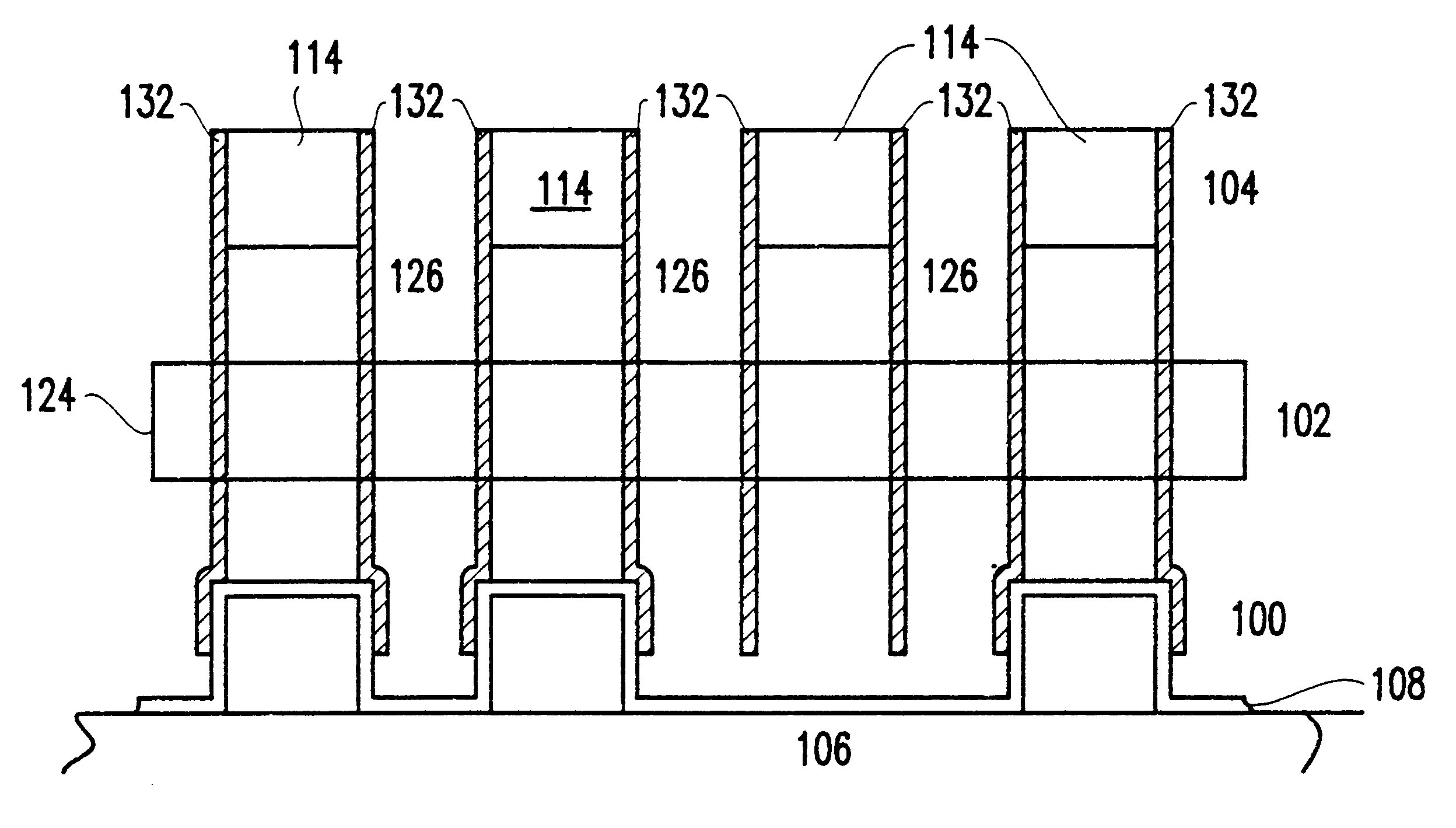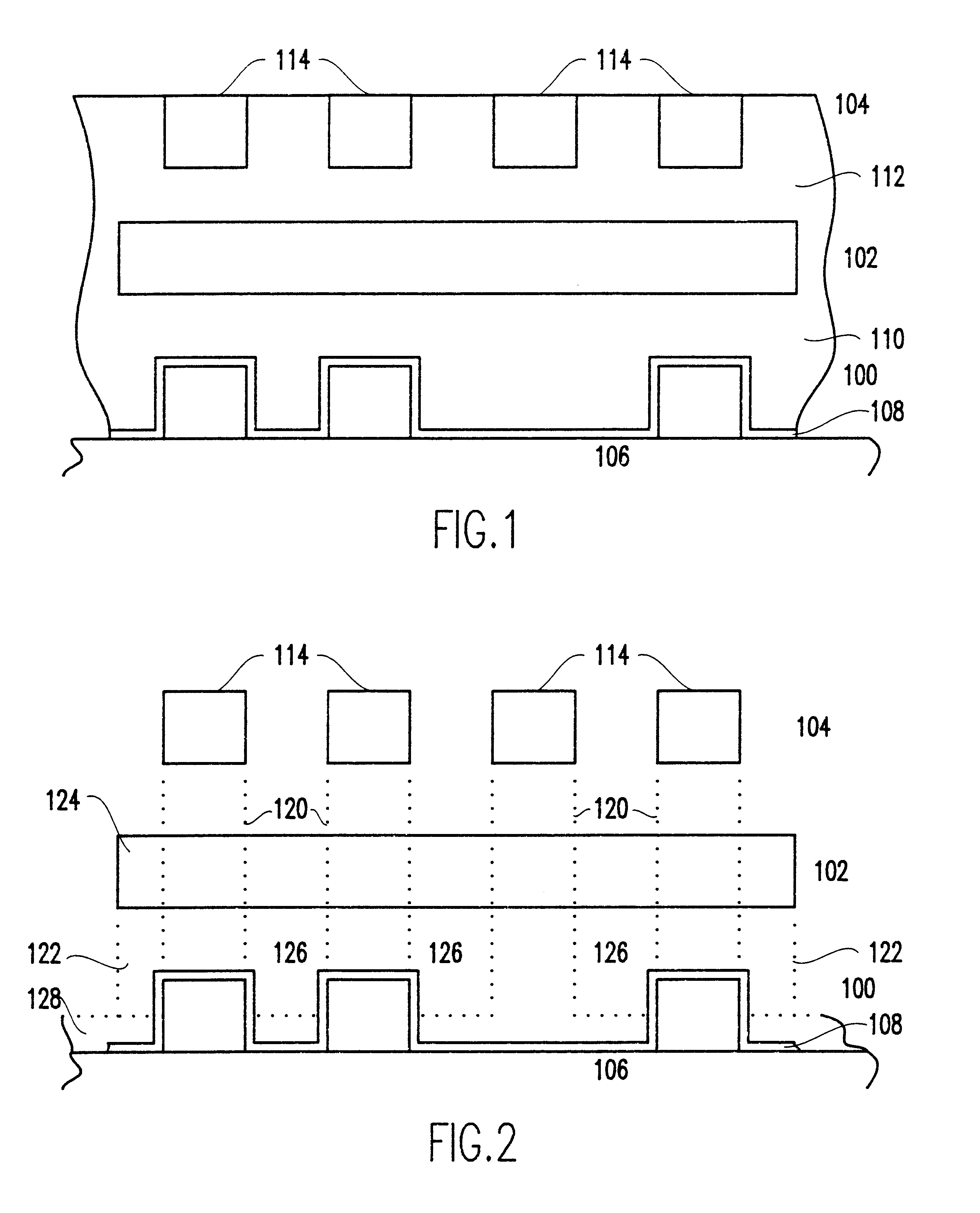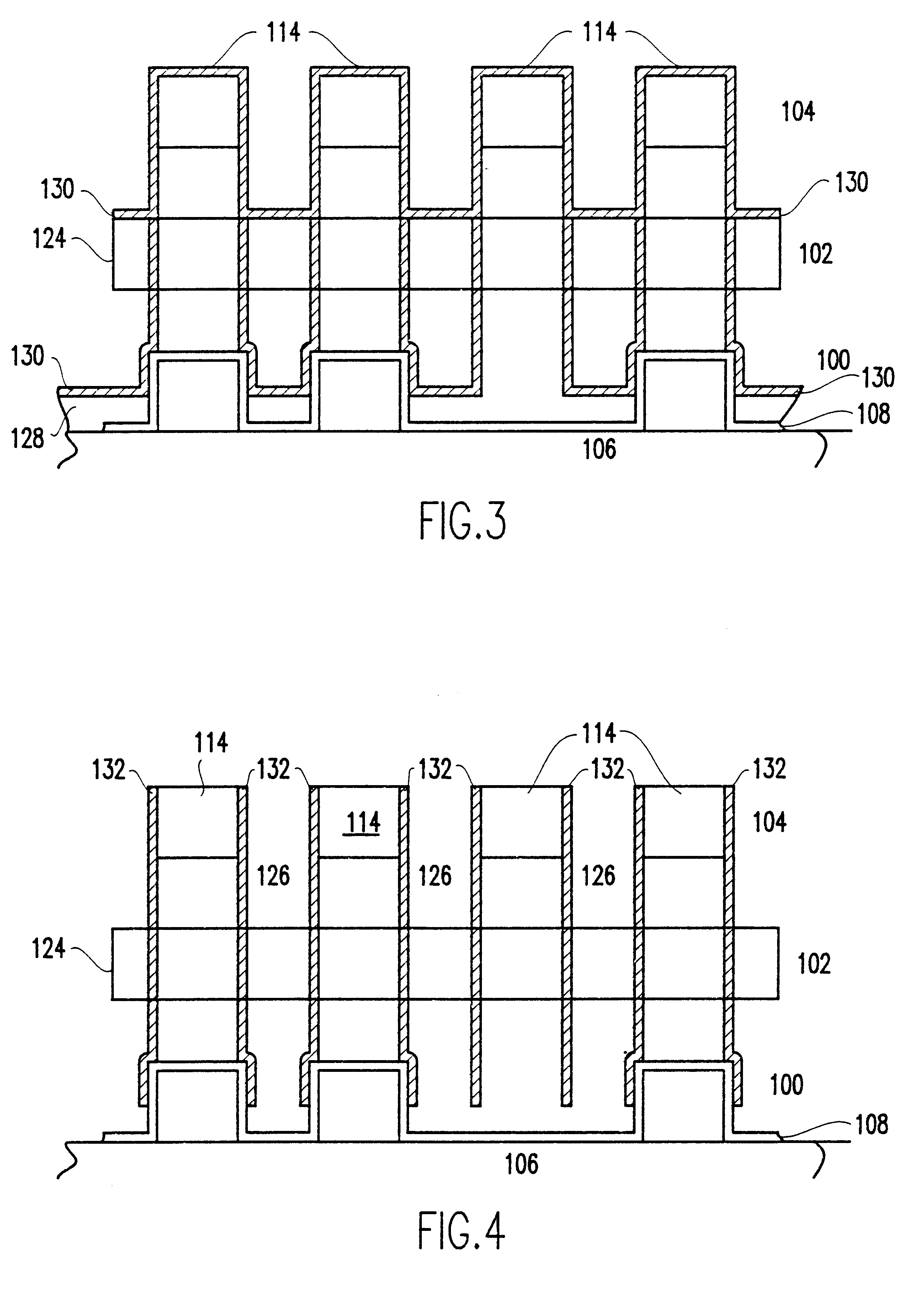Freestanding multilayer wiring structure
a freestanding, multi-layer technology, applied in the direction of basic electric elements, cable/conductor manufacturing, solid-state devices, etc., can solve the problems of increasing the length of unsupported wire, reducing the approach, and not eliminating the shorting of air dielectric ic structur
- Summary
- Abstract
- Description
- Claims
- Application Information
AI Technical Summary
Problems solved by technology
Method used
Image
Examples
Embodiment Construction
The inventor of the present invention discovered that gaseous HF may be used to remove silicon dioxide (SiO.sub.2) from a layered wiring structure without the normal damage to the wires. The damage that occurred in prior art methods was the result of using an aqueous solution to remove fill dielectric. The prior art aqueous solution invariably attacked the metal wires as it removed the fill dielectric. Although gaseous HF has been used to remove thin reactive ion etch (RIE) residues from metal lines, it was heretofore believed that the long exposures necessary for oxide dielectric removal were similarly corrosive.
However, as the inventor has found, using gaseous HF, preferably at a partial pressure between 5 and 30 Torr., SiO.sub.2 may be stripped completely away from a wiring structure, leaving the metal wires and studs behind unharmed. The gaseous reaction operates through formation of a thin aqueous film.
As a result of that discovery, the inventor further discovered that, in the ...
PUM
| Property | Measurement | Unit |
|---|---|---|
| partial pressure | aaaaa | aaaaa |
| partial pressure | aaaaa | aaaaa |
| partial pressure | aaaaa | aaaaa |
Abstract
Description
Claims
Application Information
 Login to View More
Login to View More - R&D Engineer
- R&D Manager
- IP Professional
- Industry Leading Data Capabilities
- Powerful AI technology
- Patent DNA Extraction
Browse by: Latest US Patents, China's latest patents, Technical Efficacy Thesaurus, Application Domain, Technology Topic, Popular Technical Reports.
© 2024 PatSnap. All rights reserved.Legal|Privacy policy|Modern Slavery Act Transparency Statement|Sitemap|About US| Contact US: help@patsnap.com










